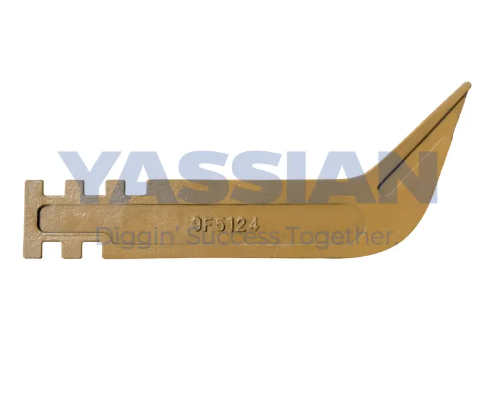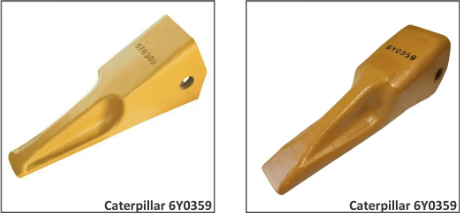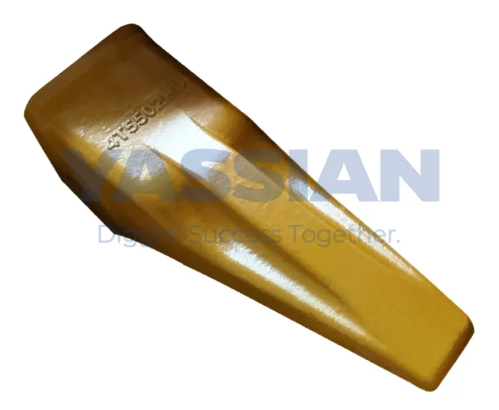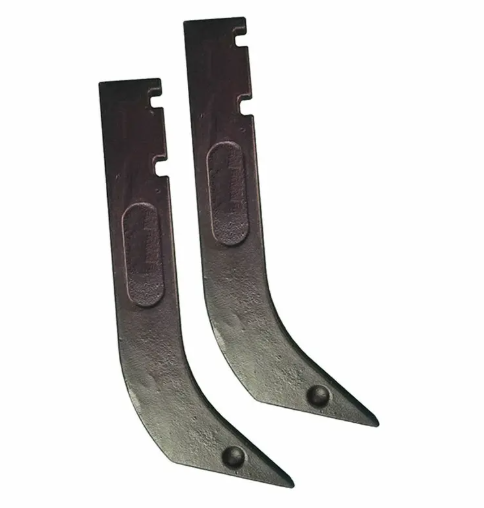- All
- Product Name
- Product Keyword
- Product Model
- Product Summary
- Product Description
- Multi Field Search

In the heavy machinery world, ripper shanks and ripper teeth are two key components that determine how effectively your bulldozer or excavator can break through tough materials. They often work together, yet each has a distinct role in the ripping process. Understanding their differences — and knowing when to replace them — can help you reduce downtime, lower maintenance costs, and maximize overall productivity.

The ripper shank is the main structural arm attached to the back of a dozer or under an excavator’s stick. It is typically made from high-strength, wear-resistant steel, such as 35CrNiMo or heat-treated alloy steels, designed to withstand extreme force and bending.
A ripper shank’s primary job is to penetrate and lift the ground or rock layer, creating cracks and loosening compacted materials. It provides the mechanical leverage for the ripper tooth to engage efficiently.
Key features:
Forged or fabricated body for strength and durability
Mounting holes or adapters for attaching the tooth
Curved or straight design depending on soil type and application
Hardened surface or overlay for extended life
Common applications:
Quarrying, road construction, mining, and frozen ground breaking.


The ripper tooth, also known as a ripper tip, is the replaceable cutting edge mounted at the bottom of the shank. It’s the first point of contact with the material, enduring the highest impact and abrasion.
Ripper teeth come in various shapes and hardness levels, depending on the target material. For example:
Sharp teeth for frozen ground and compacted clay
Blunt or chisel teeth for rocky or abrasive conditions
Heavy-duty reinforced teeth for quarry and mining operations
Manufacturers often use high-alloy cast steel or tungsten carbide overlays to increase wear resistance and service life.

Bucket Teeth for Excavator 4T5502HD
Aspect | Ripper Shank | Ripper Tooth |
Function | Provides structure and leverage | Performs the actual cutting or breaking |
Material | Heat-treated forged steel | Hardened alloy or tungsten carbide |
Wear Rate | Low (long service life) | High (frequent replacement) |
Cost | Higher per unit | Lower per unit |
Replacement Interval | Rarely replaced unless damaged | Regularly replaced as part of maintenance |
Design Focus | Strength and bending resistance | Sharpness and wear resistance |
In short:
The ripper shank provides the power, while the ripper tooth delivers the cutting action.
Although ripper shanks are far more durable, they still require attention. Replacement or repair may be needed if you observe:
Cracks along the shank body or welds
Distorted or bent shape from overloading
Worn adapter mounts causing tooth looseness
Severe corrosion or thinning after long-term use
Always use OEM-quality or precision aftermarket shanks to ensure perfect fitment and maintain machine performance.

Caterpillar Style Motor Grader Scarifier Shank 1957218
Frequent inspection is critical. Replace your ripper tooth when you notice:
Rounded or blunted tips that reduce penetration
Uneven wear that affects digging balance
Visible cracks or breakage in the tip
Difficulty in ripping or increased fuel consumption
Worn teeth not only reduce efficiency but also transfer excessive stress to the shank and linkage, leading to costly damage.

To maximize the working life of both parts:
Choose the right tooth for your material — avoid using standard teeth in abrasive rock.
Inspect daily — check bolts, retainers, and fitment before operation.
Avoid side loading — keep the ripper aligned with the machine’s pulling direction.
Rotate teeth when wear is uneven to use the full surface.
Lubricate and clean the shank and mounting points regularly.
While the ripper shank and ripper tooth may appear as a single assembly, their roles, materials, and maintenance needs are quite different. The shank provides the strength and structure, while the tooth delivers the precise cutting performance.
Keeping both in good condition ensures your bulldozer or excavator continues to rip efficiently — saving fuel, time, and money on every job.
If you’re seeking durable, heat-treated ripper shanks and wear-resistant teeth compatible with CAT, Komatsu, or Volvo machines, contact us — a trusted manufacturer and exporter of ground engaging tools.
Get a quote today and keep your machines performing at their best.